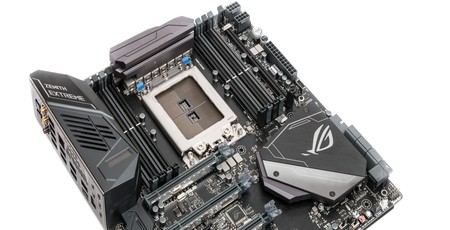
Manufacturer: Asus
UK price (as reviewed): £519.95 (inc. VAT)
US price (as reviewed): $549.99 (exc. tax)
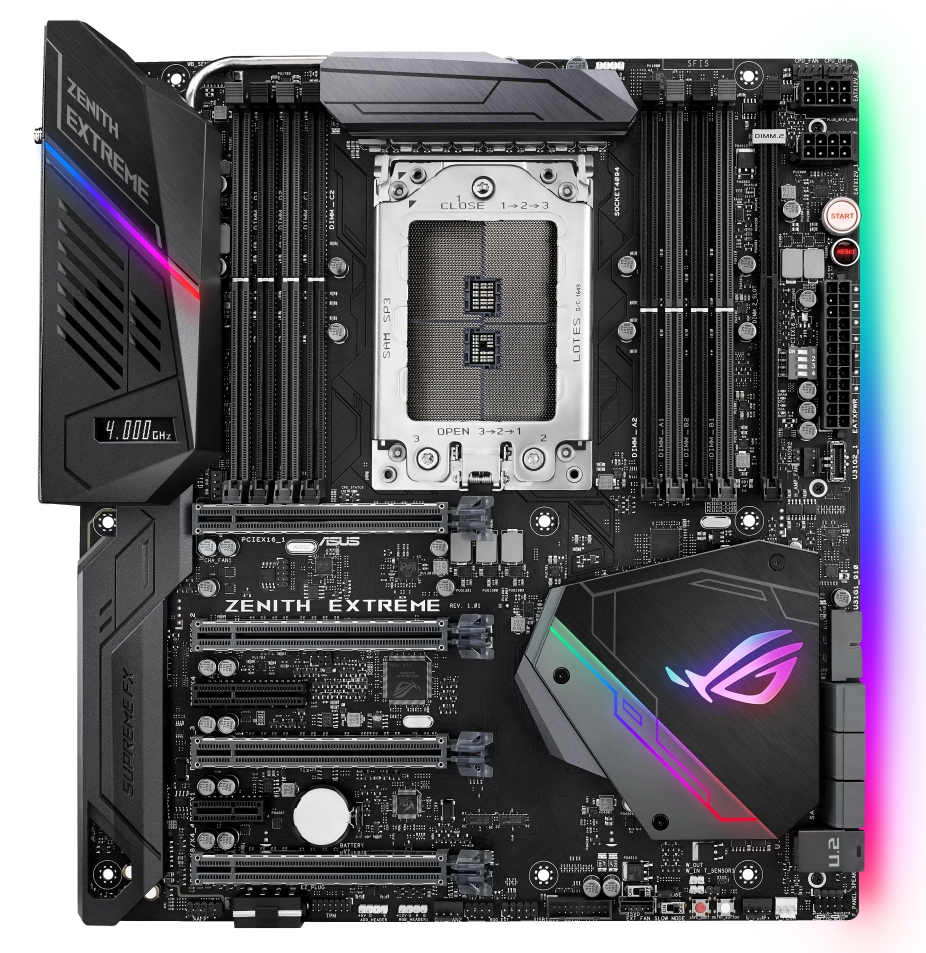 AMD's Threadripper is proving to be a potent high-end weapon for AMD, offering more multi-threaded bang for your buck than Intel's Core i9-7900X. While Intel will soon offer even more cores to match, and even better its rival in the core count and performance stakes, AMD has definitely carved out a niche for itself in the high-end desktop market space.
AMD's Threadripper is proving to be a potent high-end weapon for AMD, offering more multi-threaded bang for your buck than Intel's Core i9-7900X. While Intel will soon offer even more cores to match, and even better its rival in the core count and performance stakes, AMD has definitely carved out a niche for itself in the high-end desktop market space.However, we were a little concerned by early images of X399/Socket TR4 motherboards a few months ago as they seemed to lack some of the pizzazz of the competition's high-end offerings. Thankfully, today we're looking at a motherboard that's every bit as feature-packed and riddled with more than a little bit of crazy - Asus' flagship X399 motherboard, the ROG Zenith Extreme.
There is very little lacking here compared to what can only be a Rampage-class Intel board. It's E-ATX, for starters, yet the PCB is packed. There are four 16x PCIe slots plus single 1x and 4x slots, plus every current storage standard - U.2, six SATA 6Gbps ports, a trio of M.2 ports, plus the full variety of USB ports and headers, too.

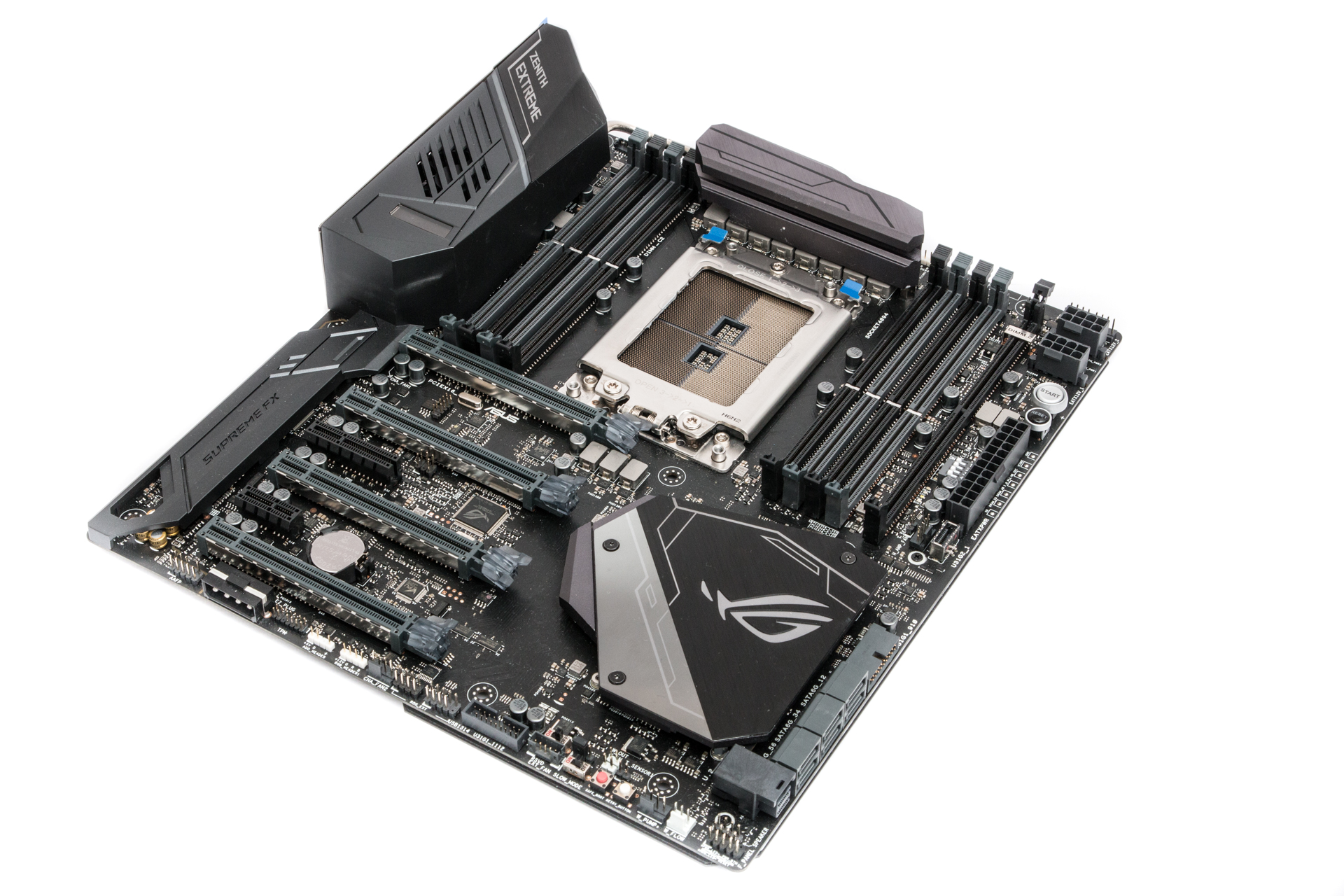
These include Asus' usual USB 3.1 front panel header plus USB 3.1 Type-A and Type-C ports on the rear panel, as well. There are some beefy heatsinks dealing with the CPU power circuitry, linked by a heatpipe and you also get an integrated cooling fan in the I/O shroud to keep them cool too. This did prove to be quite whiny, but you can tune it down using Asus' fan control software. There's obviously plenty of RGB lighting, with two zones in the board itself plus a pair of 4-pin headers on the PCB plus an extension cable in the box. Both 5V and 12V RGB LED strips are supported too plus you get Asus Aura sync to match your lighting across a range of devices.
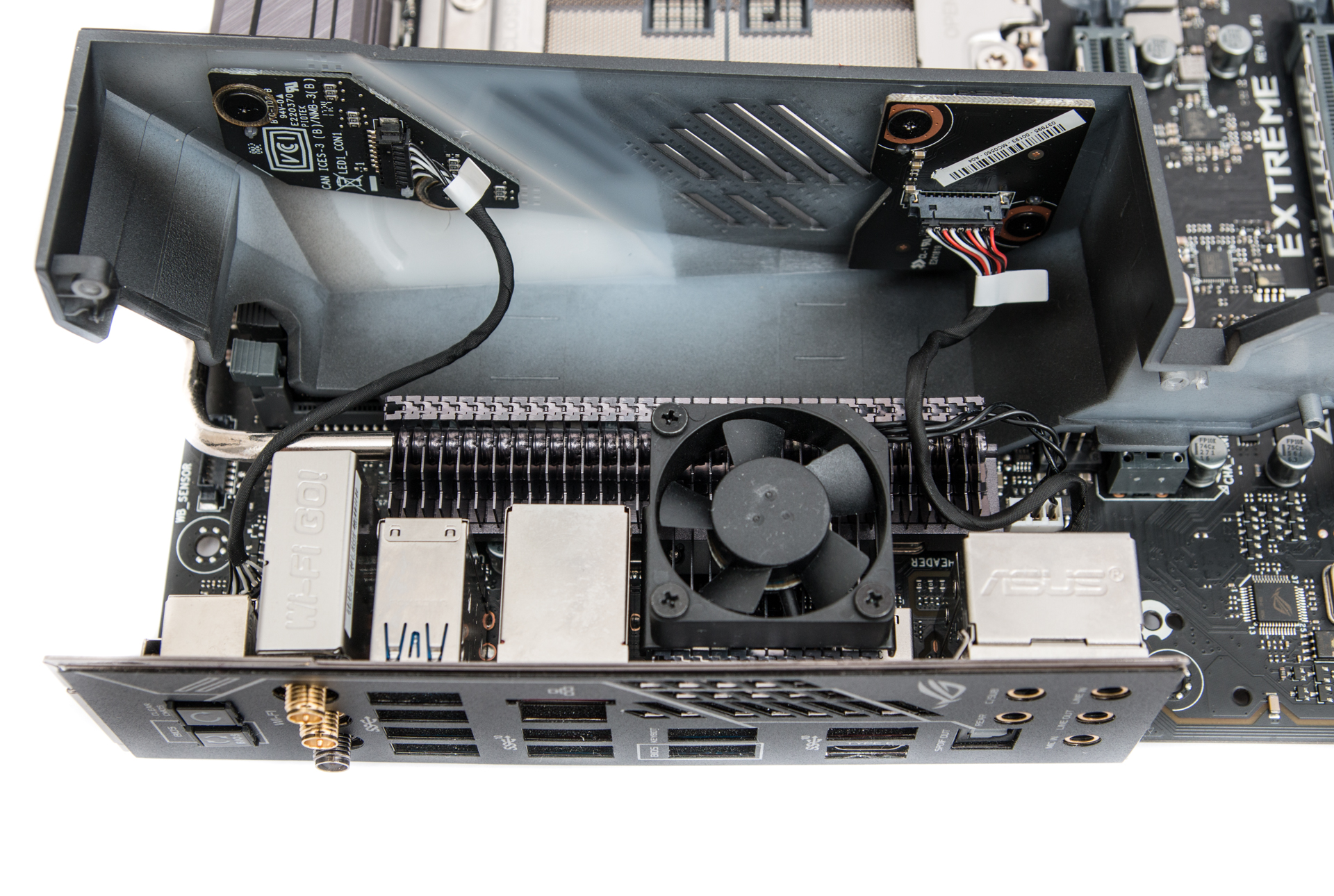

Also under the shroud is a Livedash OLED, which can display customisable graphics such as CPU frequency, temperature or fan speeds or display your own custom GIF. If you're wondering where the M.2 ports are, well one is hidden underneath the PCH heatsink, which comes equipped with its own thermal pad to dish out heat to that heatsink. It's obviously advisable to use SSDs that have all the components on the top side to prevent the underside overheating.

The other two ports come courtesy of a DIMM.2 riser card that uses a ninth DIMM-like slot on the right of the board to provide two fully fledged PCIe x3 M.2 slots as well as fans for better cooling. We think this is a great idea as it not only looks better than the hideous vertical arrangements we've seen that have the SSD standing up like a skyscraper, but it's also likely they've benefit more from your case or cooler's airflow too. The module makes it much easier to get at the SSDs too and clips in place just like a memory module would.

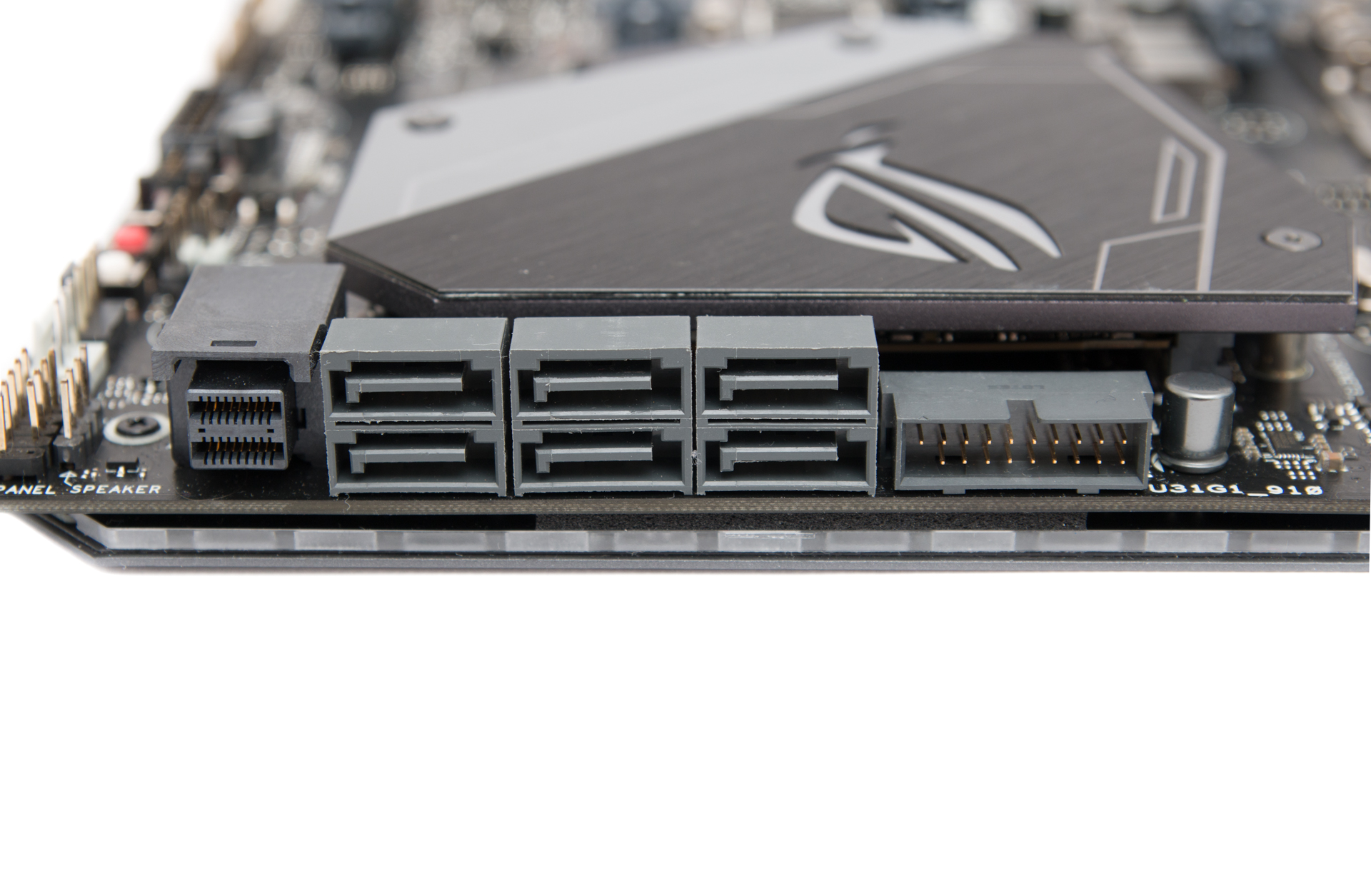
Other accessories include a fan-header extension hub, dual aerials for the on board 802.11ad WiFi and to make use of some those X399 PCIe lanes, Asus also includes a ROG AREION 10Gbit Ethernet Card. If you were planning on using more than six hard disks or 2.5in SSDs, then you might be disappointed with the number of SATA ports on the board, but the ROG Zenith Extreme is all about next-gen storage.

You'll need to make sure your PSU has a pair of 8-pin EPS 12V connectors for the CPU, though, as the Zenith Extreme won't be a happy bunny if you try to use just one, with red lights and warning messages flashing up in angry robot style. Given the TDP and core counts of the CPUs involved, this is certainly a wise move anyway. Many of the same features are here that we're seeing with other modern Asus boards, such as the dedicated header for 3-pin powered DIY water cooling pumps and flow plus temperatures sensors, plus a smattering of extreme overclocking tools such as LN2 mode, slow mode and PCIe lane switches.
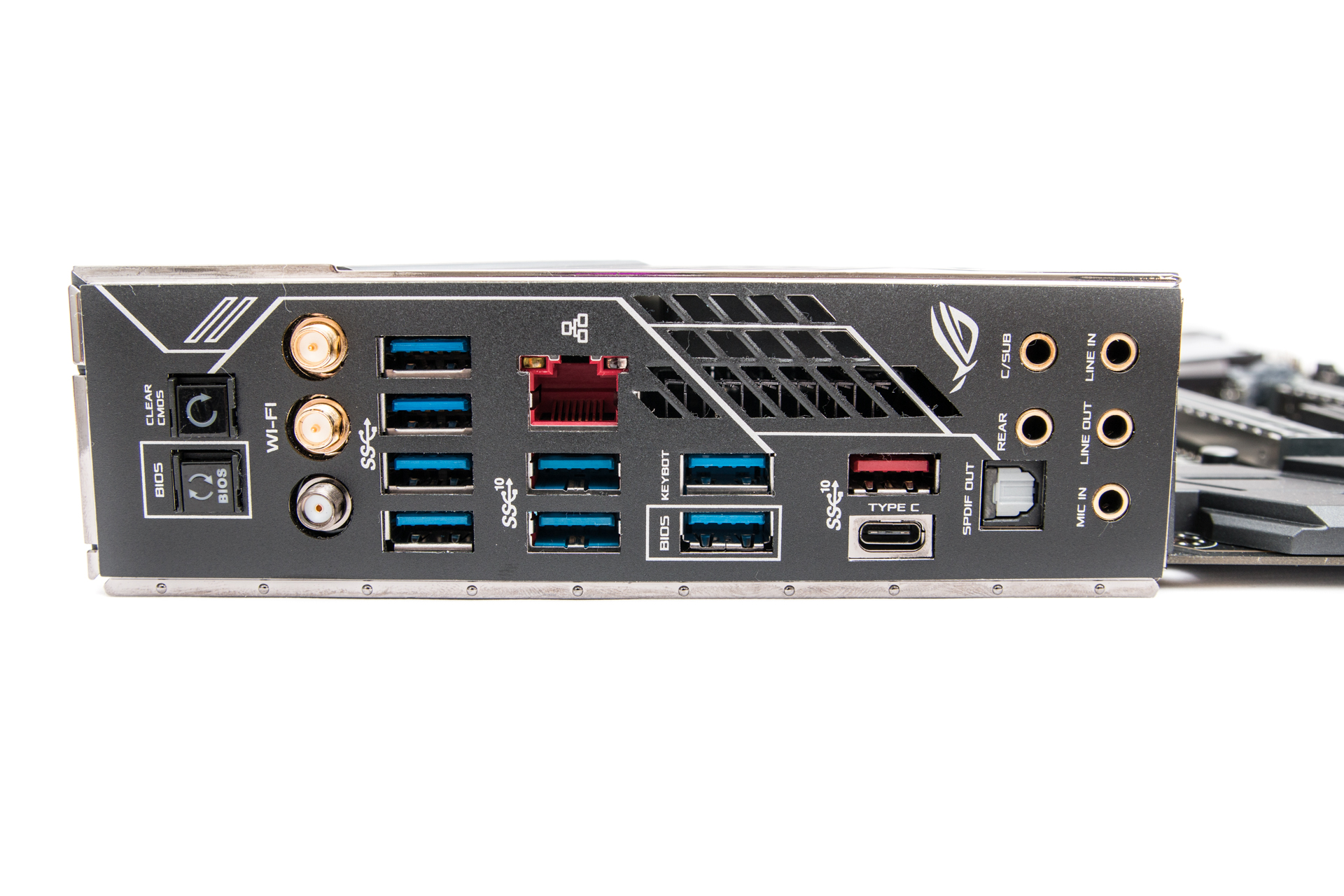
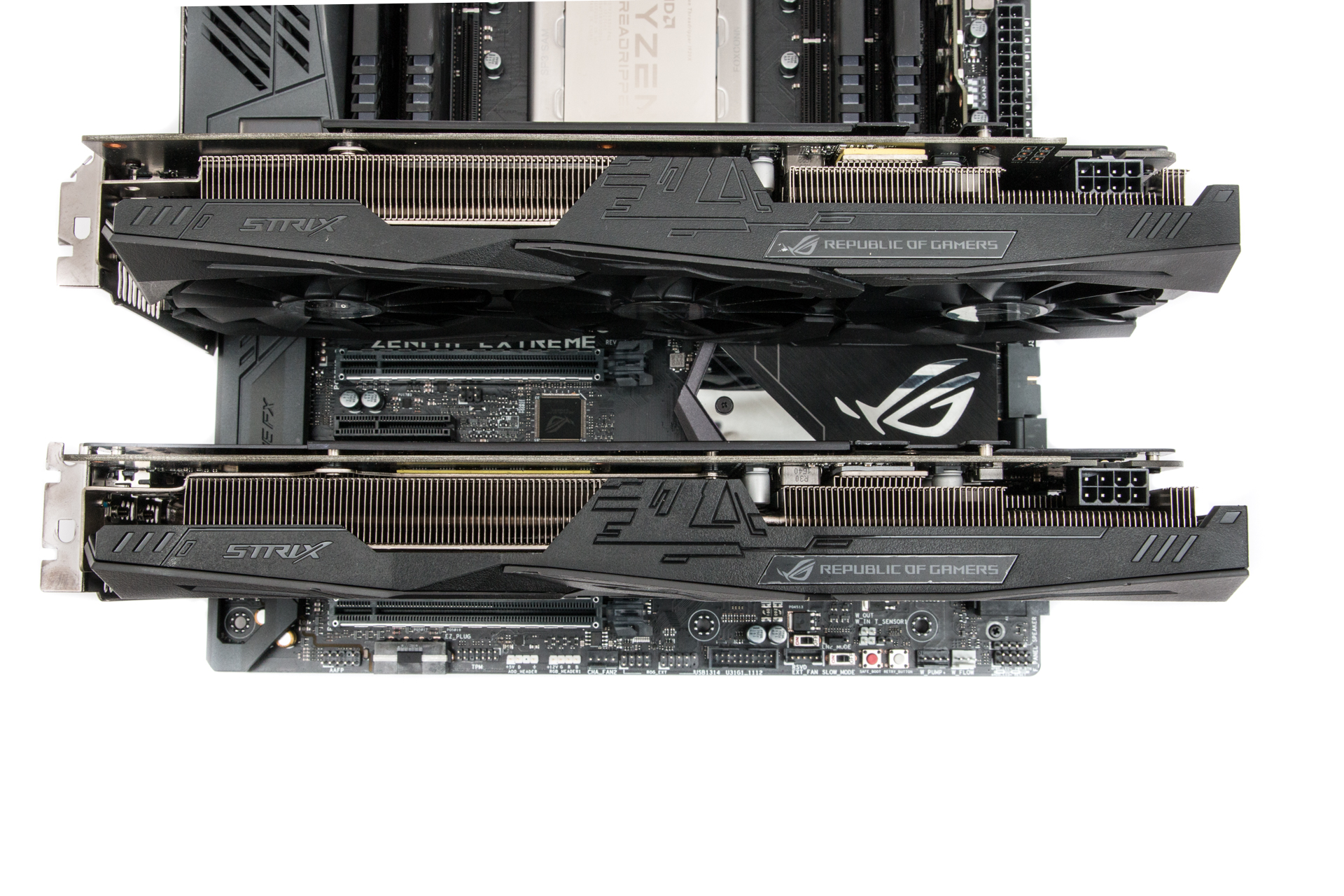
For dual-GPU fans, there's plenty of space between the primary and secondary slots for two-way setups, even if both cards are triple slot monsters, thanks to two PCIe slots sitting between the primary ones. You'll clearly be able to use the 4x slot for a sound card, without impeding on the top GPU's airflow.
Specifications
- Chipset AMD X399
- Form factor E-ATX
- CPU support AMD Scoket TR4 (Threadripper)
- Memory support Quad-channel, eight slots, max 128GB
- Sound Eight-channel SupremeFX ALC S1220A
- Networking 1 x Intel I219V Gigabit Ethernet, 802.11ad Wi-Fi, Bluetooth 4.1
- Ports 3 x M.2 PCIe 3.0 x4 32Gbps (1 x PCIe/SATA 6Gbps up to 2280, 2 x PCIe up to 22110), 6x SATA 6Gbps, 1 x USB 3.1 Type-A, 1 x USB 3.1 Type-C 1 x USB 3.1 header, 10 x USB 3.0 (2 via headers), 2 x USB 2.0 (2 via header), 1 x LAN, audio out, line in, mic, Optical S/PDIF out
- Dimensions (mm) 305 x 277
- Extras 10Gbit LAN PCIe card, fan expansion hub, WiFi aerials, RGB LED extension cable, DIMM.2 adaptor, 3 x thermister cables, driver USB flash drive

MSI MPG Velox 100R Chassis Review
October 14 2021 | 15:04

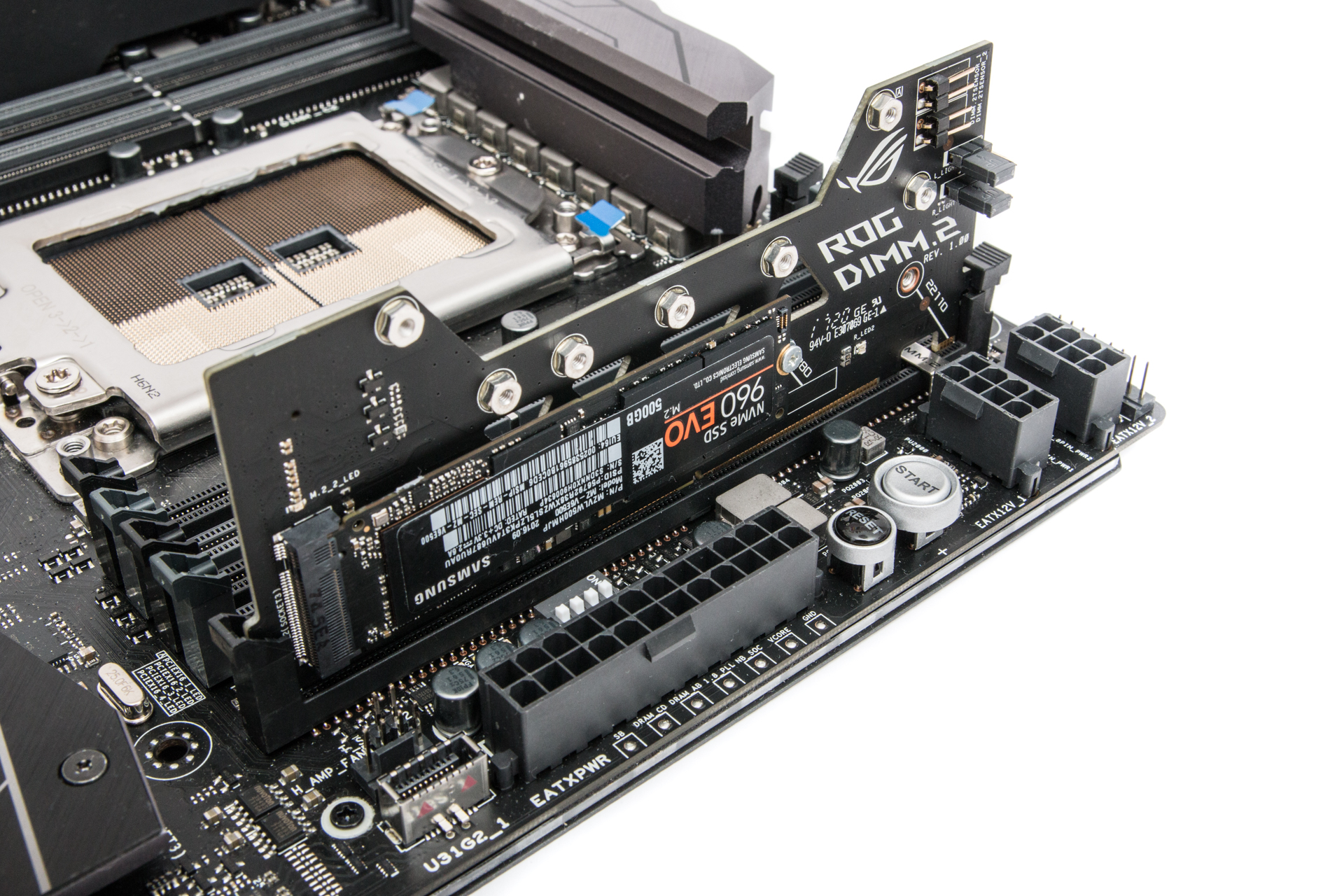
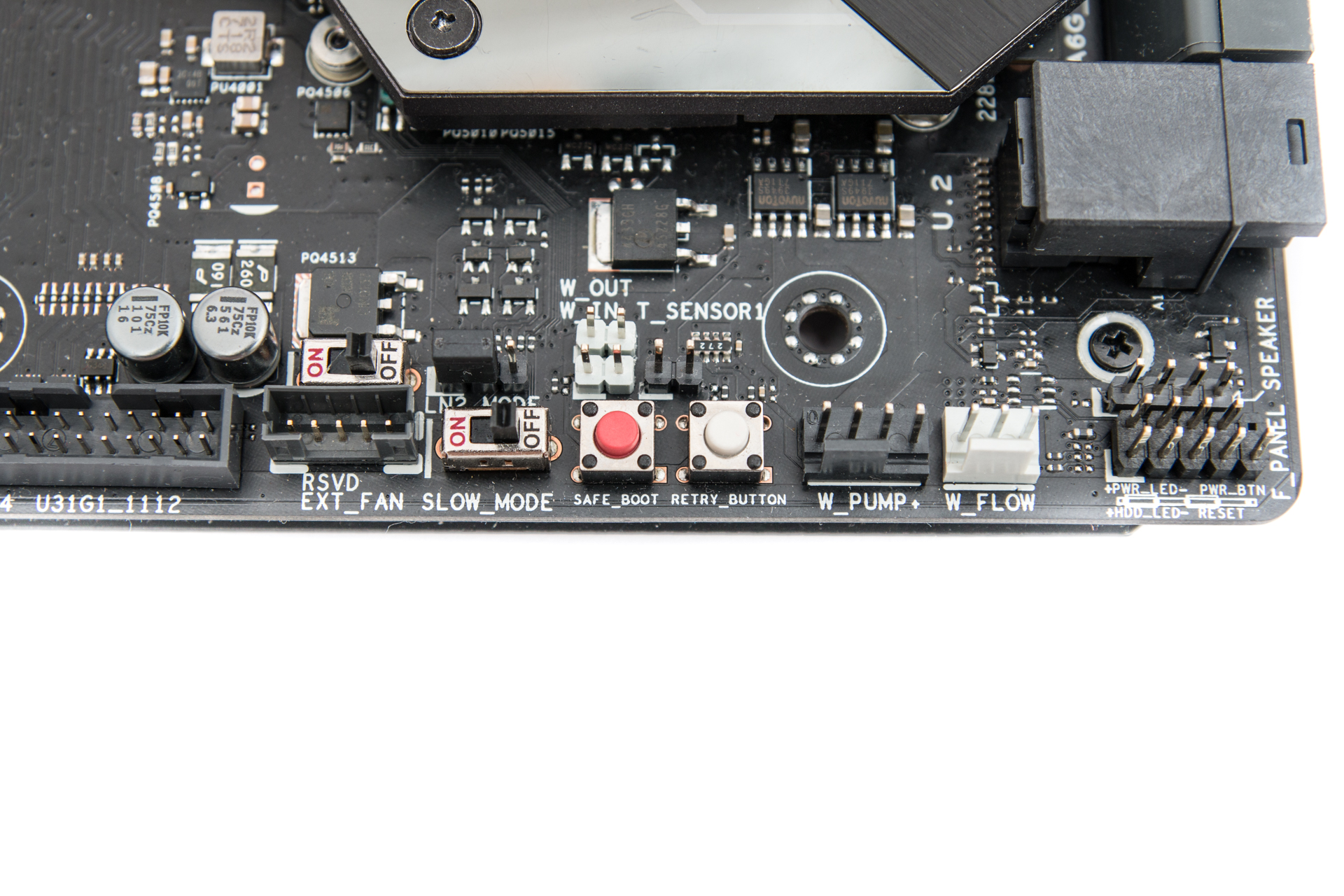
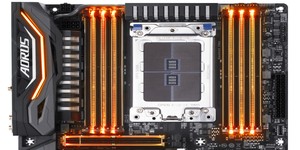

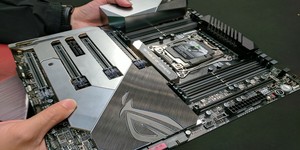




Want to comment? Please log in.